From glacial lagoons to thunderous waterfalls, Iceland’s Ring Road is the ultimate touring destination. Whether you tackle the country’s circular highway on a self-drive tour or by hitchhiking, there’s never enough time to take in the epic sights along the way.
In this article, we breakdown the best way to organize an Iceland Ring Road trip, including self-drive ring road tips, a day to day itinerary of sightseeing stops, and guidance on the best time of year to travel Iceland’s famed Route 1.
Here’s our ultimate Iceland Ring Road itinerary!
What is the Ring Road in Iceland?
Iceland’s Ring Road is a circular touring route that starts and ends in Reykjavik, predominantly following the coast as it takes travelers around the entire circumference of the island. It’s the best way to experience Iceland’s most famous sights and attractions.
The Ring Road is officially known as ‘Route 1.’ The route (with options for multiple detours, of course) follows the outline of Iceland’s national highway. This is the primary road that connects the capital with the country’s major settlements, heading east to Hofn, then north to Akureyri, and back around again to Reykjavik.
Despite being the main transport route, outside of Reykjavik the Ring Road in Iceland is a standard two-lane highway. Some river crossings only have space for one car to pass at a time, too.
Iceland’s Ring Road takes in the country’s best sights, including black sand beaches, volcanic peaks, glacial lagoons, and dramatic fjords. There are opportunities for hiking, mountaineering, caving (and ice-caving), whale watching, and more. Visit at the right time of the year, and you can spot the Northern Lights.
While Route 1 mostly sticks to the coast, an Iceland Ring Road trip can be combined with detours inland to the iconic Golden Circle or, far west to the Snaefellsnes Peninsula.
Map of Iceland’s Ring Road
What’s the Best Way to Explore the Ring Road?
Iceland isn’t exactly known for its great public transport links (although there are one or two summer buses from Reykjavik round to Akureyri, Iceland’s second-largest city), so the best way to experience the Ring Road is a self-drive tour or an organized group tour.
Lots of organized Ring Road tours take in the major highlights, spread out over one week to ten days of travel. If you don’t have a driver’s license, aren’t comfortable driving in Iceland, or are solo-traveling, then group tours are a great way to make travel mates and see the highlights on a reasonable budget.
In the summer months, plenty of intrepid travelers on an ultra low budget choose to hitchhike the route rather than driving the Ring Road in Iceland themselves. As this is the most popular self-drive route in the country, you’ll be safe in the knowledge that there are a lot of other tourists going your way. Outside of the summer months, though, hitchhiking isn’t a great idea – it’s going to be far too cold!
For ultimate flexibility and the freedom to take as many detours and make as many photo stops as you want (and trust us, you’ll be constantly pulling over for photographs), the best way to experience Iceland’s Ring Road is on a self-drive tour.
Four-wheel-drive vehicles can help you to tackle icy, snowy weather in the colder months of the year, and provide you the chance to get off the beaten track. However, a four-wheel-drive is unnecessary for most of the year if you are just going to specifically drive Iceland’s Ring Road. Route 1 is well-surfaced and well-maintained along the entirety of the highway.
In the peak summer season, it’s recommended to book out car rentals far in advance, particularly if you have specific needs (such as an automatic or four-wheel-drive). Car rentals are limited, and they can sell out quickly.
Recommendation: Use Rentalcars.com to find the best car rental deals. They search and compare rental prices from all major rental companies in Iceland, so you can rest assured that you’re getting the best possible price on your rental car.
Where to Stay on the Ring Road?
The Ring Road in Iceland is sparsely populated outside of Reykjavik, and that means accommodation can be limited.
There are guesthouses, bed and breakfasts, and Airbnb options in most major towns along the way, and larger international-style hotels in locations such as Akureyri.
Related: 20 Best Airbnbs in Iceland
In summer, accommodation options can get booked up quickly, so you will need to plan your overnight stops in advance to get good deals. Booking.com is by far the best place to find good deals on accommodation in Iceland.
Campsites open for the summer months, and are a great option if you’re on a budget. Campervans are also an excellent option if you want to combine transport and accommodation.
How Long Does it Take to Drive Iceland’s Ring Road?
Route 1 is 822 miles long. That doesn’t include any detours off the highway itself, which add extra mileage.
You need a minimum of seven days to go on a road trip in Iceland. However, you’ll spend several hours a day driving. Our Ring Road itinerary below takes seven days to complete, not including any extra days you might want to save for visiting Iceland’s museums and enjoying the sights in the capital.
At a more relaxed pace, 10 days is an excellent time frame for exploring the Ring Road, enjoying some add-on experiences (such as a half-day whale watching tour), and spending some more time in Reykjavik.
What’s the Best Time of Year to Drive the Ring Road?
If you’re looking for the best weather, guaranteed whale sightings, and to experience the iconic Midnight Sun, then the best time of year to road trip the Ring Road is in summer. The weather is best and the days are longest in June, July, and August.
This is peak season, though. Summer trips need to be well-planned in advance, to secure good deals on flights, car rentals, and accommodation. The roads are busy and the sights are packed with other tourists.
If you’re looking for better prices and a bit more space, then the shoulder seasons are an excellent alternative to summer. The weather is still great and the days are still long from March to May, as well as September and October. Just be prepared for the odd snowstorm (Iceland’s weather is notoriously unpredictable) and the occasional diversion due to snow and ice.
If you’re looking to see whales and the Northern Lights, then spring (March and April) offers a great chance to experience both. March is the start of the whale watching season, and on a good, clear night, you can catch the Northern Lights as late as April.
For guaranteed Northern Lights sightings, you need to be in Iceland in winter. This is not a time to be self-driving, however, as even the country’s main highway is totally snowed in for much of the season. Driving in Iceland in winter takes serious skill and experience, and it’s not recommended.
If you intend to visit Iceland in the winter, we highly recommend booking a small-group Ring Road tour instead.
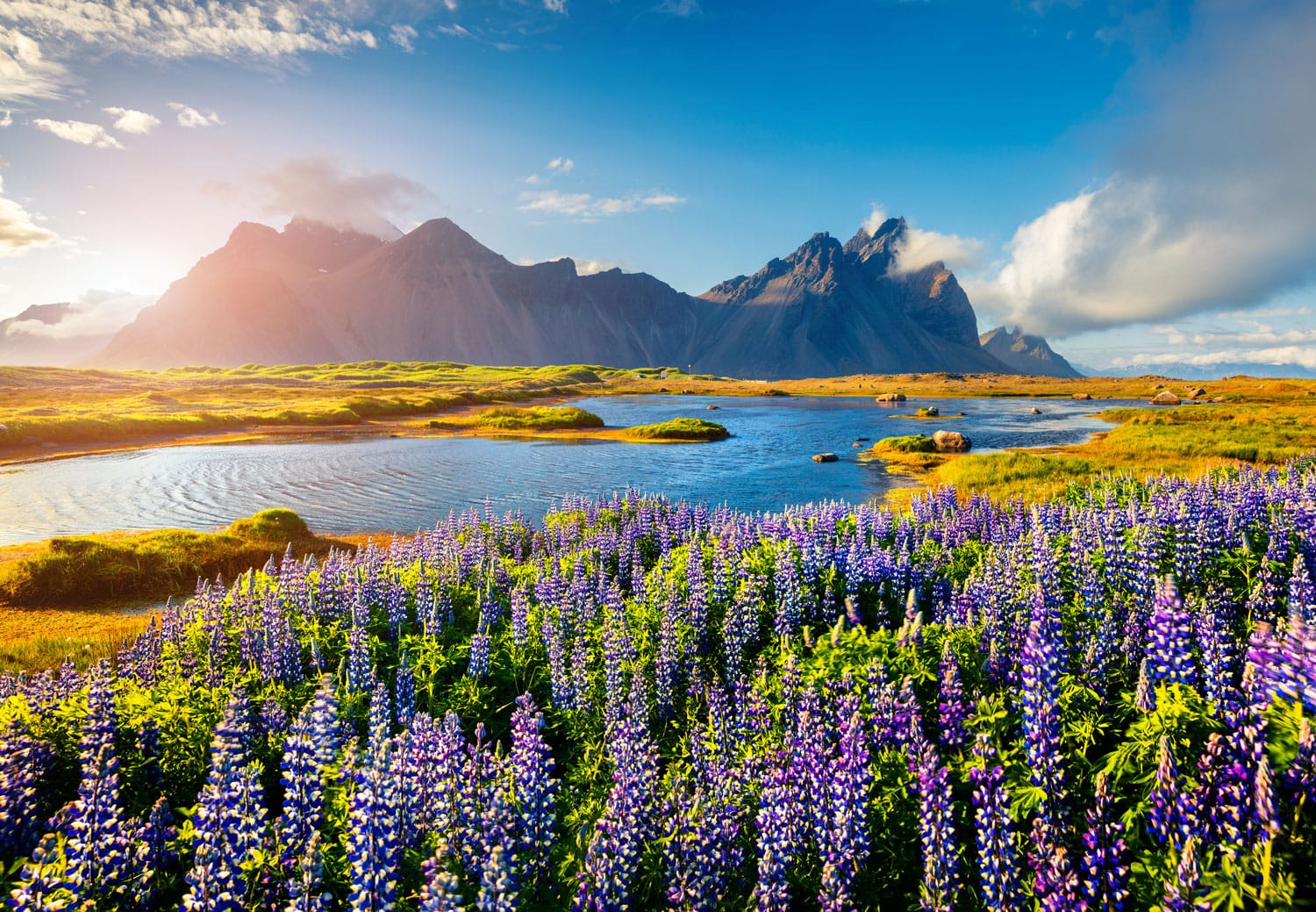
Driving Tips for Iceland
If you’re planning your first self-drive trip in Iceland, then never underestimate the weather. Even in summer, snowstorms can hit out of nowhere, and they are more likely the further north you drive. Always keep one eye on the road and one eye on the weather.
Icelanders drive on the right-hand side of the road, and outside of Reykjavik, all roads have either one or two lanes. Roads are well-maintained, but unless you have a four-by-four, stick to the tarmac. If you get stuck off-road or venture down a road that has been closed due to bad weather, you’ll have to pay a small fortune to be rescued.
When driving, be wary of roadside animals, and be wary of tourists in front suddenly pulling over for a photo opportunity!
We also want to remind you to purchase travel insurance. You never know what will happen and trust us, you do not want to get stuck with thousands of dollars in medical bills. As a wise man once said, “If you can’t afford travel insurance, you can’t afford to travel.” So don’t leave home without it.
We personally use SafetyWing. For only around $40 a month, it’s really a no-brainer. You can get a quick quote below:
Two other popular travel insurance providers are World Nomads and Heymondo.
The Ultimate Ring Road Itinerary
This itinerary is written in an anticlockwise direction. This is the most popular direction to road trip the Ring Road, but the reality is that it makes little difference if you choose to drive clockwise!
Start/End
Our Iceland Ring Road itinerary can start or end in Reykjavik, the capital, or at Keflavik International Airport, where you can pick up your rental car immediately on landing in Iceland.
You can either drive to the capital from the airport (and spend a few days here, before visiting Iceland’s Golden Circle), or you can head southeast on Route 1 after you arrive and make for the southern coastline and Vik.
Best Places to Stay in Reykjavik:
Midgardur | CenterHotel Plaza | Loft – HI Hostel
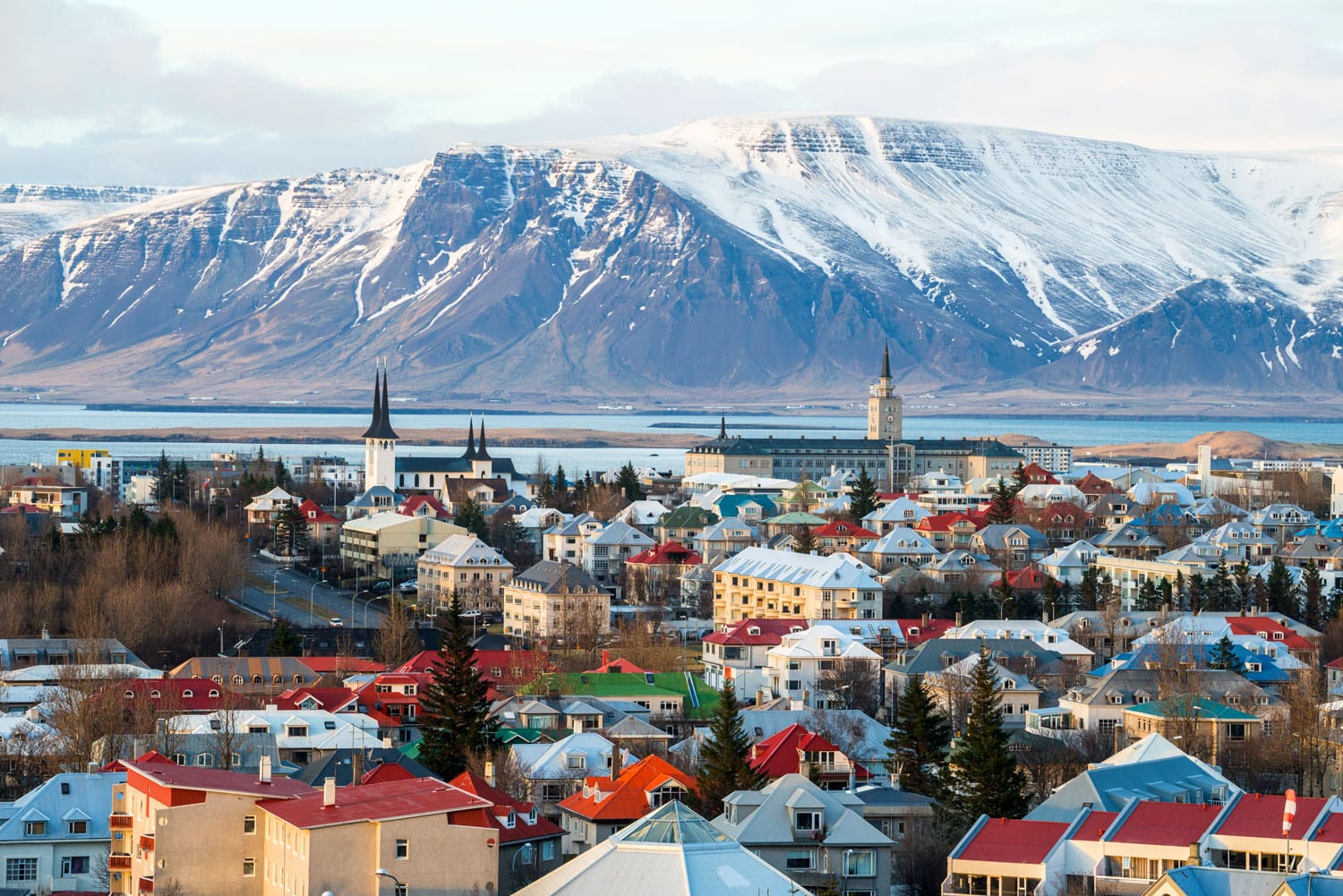
Day 1: Golden Circle + Blue Lagoon
The Golden Circle and the Blue Lagoon are two of Iceland’s most popular attractions, and although neither are technically part of Route 1 itself, there’s no sense in missing out on them.
The Golden Circle is located outside of Reykjavik, inland from the capital. This famous tourist trail comprises Thingvellir National Park, the Geysers, and Gullfoss waterfall. It’s a circular route, starting and ending in Reykjavik, that gives you a real sense of what’s awaiting you out on the ring road.
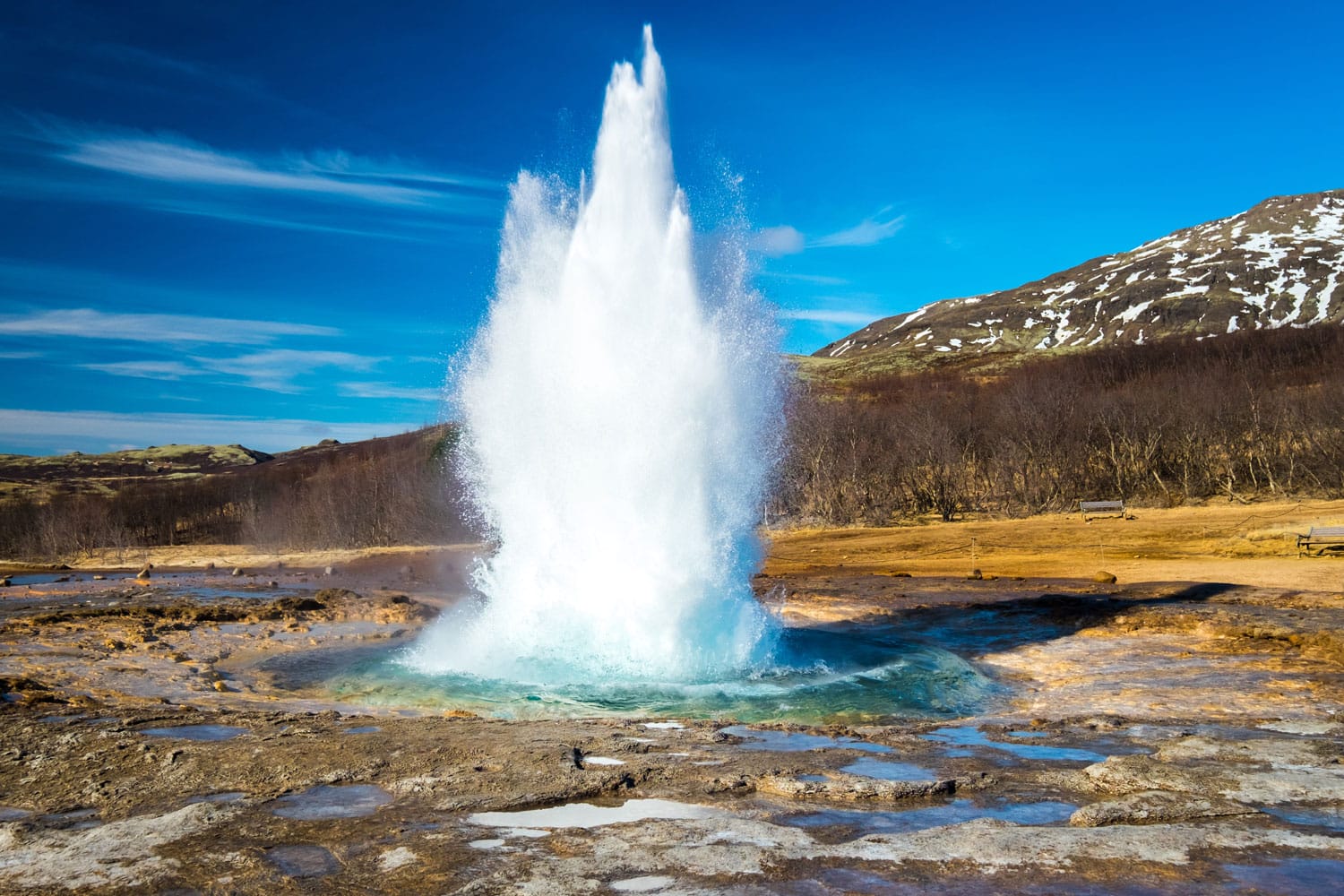
The Blue Lagoon is located close to Keflavik International Airport and can be visited after you land or before you leave. You can also add it to the end of the Golden Circle route. This “first day” can be the start or the end of the road trip, as you can use Reykjavik as your base for the night before heading out onto Route 1 the following morning or returning to the airport.
Best Places to Stay on the Golden Circle:
Farmhotel Efstidalur | Selfoss Hostel | Frost and Fire Hotel
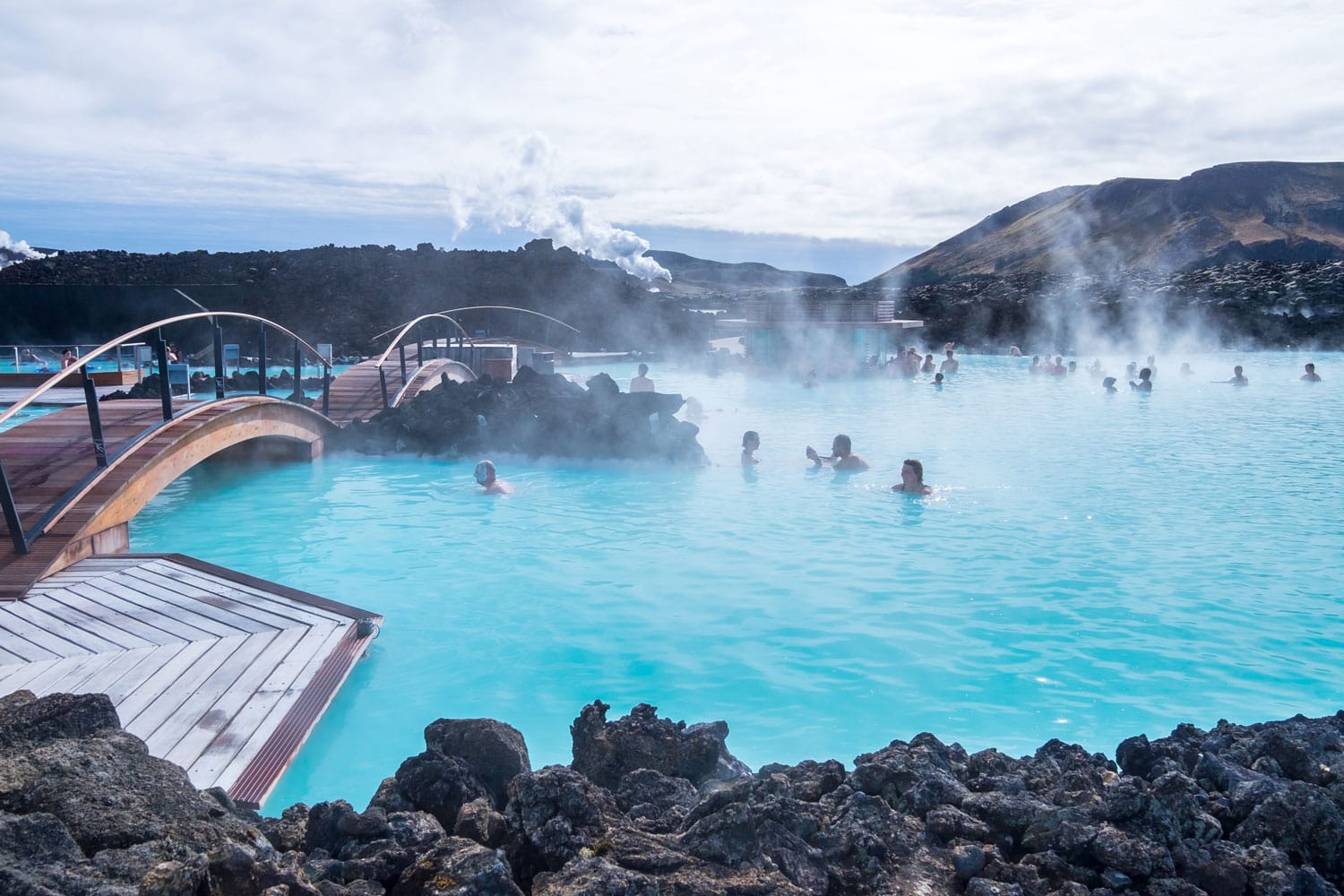
Day 2: South Coast to Vik
Now you’re on the Ring Road itself, and it’s time to explore the southern coast of Iceland. You’re still not too far from Reykjavik, and the stunning nature on offer here means that the sights here are busy.
They are busy but dramatic, and your first stop will be the waterfalls of Skogafoss and Seljalandsfoss. These towering, crashing waterfalls are literally on the side of the road, and they are framed by Eyjafjallajökull – the volcano that stopped flights worldwide when it erupted in 2010.
Once you pass the waterfalls, you’ll start to see the black sand beaches that the south coast is famed for. If you have extra time in summer, then you can detour to the Vestmannaeyjar Islands, where you’ll find colorful puffins living on a rocky, secluded archipelago.
Spend the night in Vik, where there’s a small museum and the tall basalt cliffs and black sands of Reynisfjara Beach to visit.
Best Places to Stay in Vik:
Puffin Hostel | The Barn | Hótel Kría
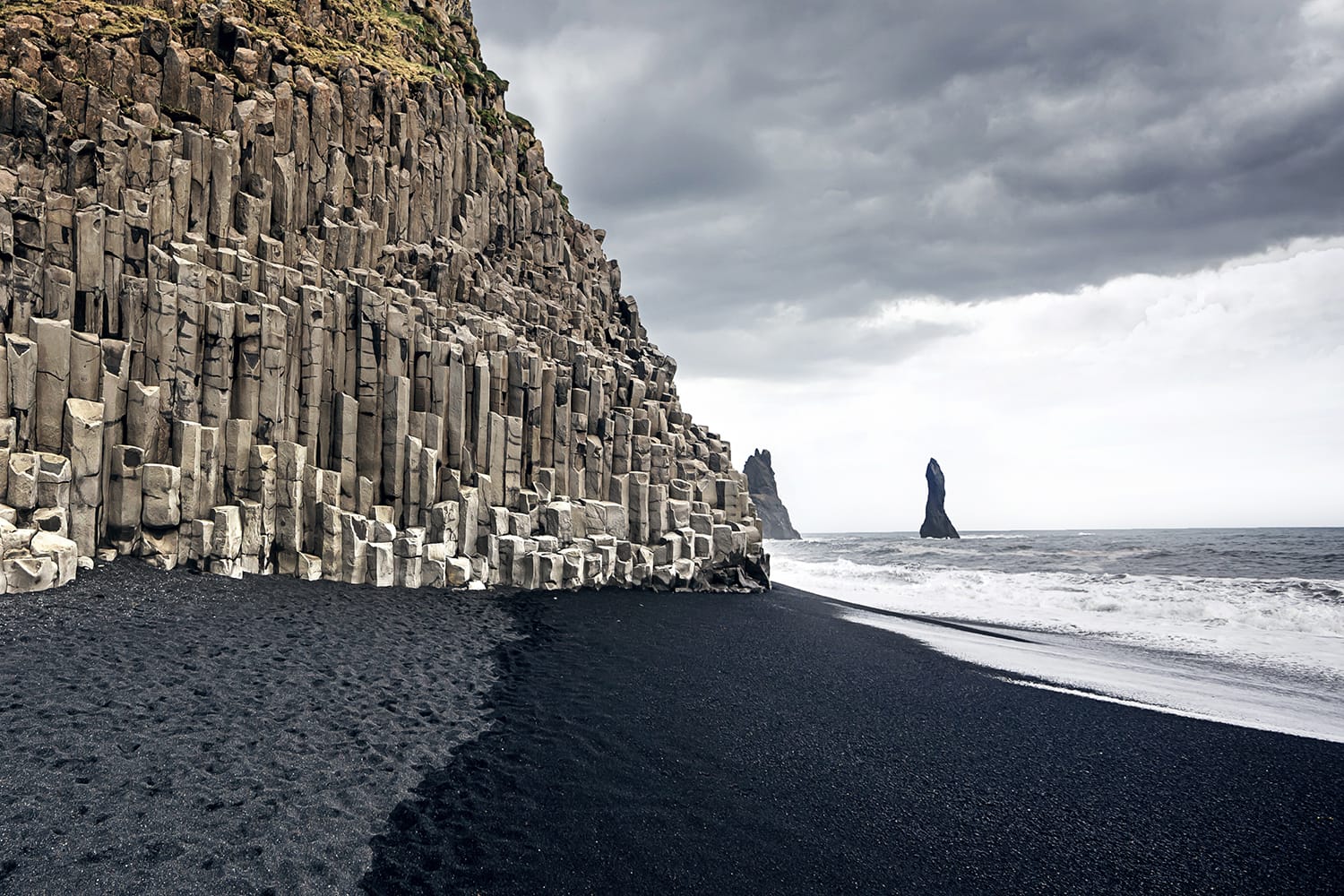
Day 3: Vik to Hofn
Next, you’re starting to head north as you join the eastern shoreline and follow Route 1 from the small town of Vik to the equally small town of Hofn. It’s three hours driving time, but get an early start, because there’s a lot to stop for on the way.
First up, you’re visiting Skaftafell, which is part of the enormous Vatnajokull National Park. Here you can take a hike to Svartifoss, the black waterfall (so-called for its basalt rock). If you’re feeling adventurous, then you’ll also be able to join an ice-caving tour deeper into the national park (only possible between mid-October and throughout March), where you’ll be guided into the depths of the Vatnajokull Glacier.
After a morning of hiking, continue north and you reach one of the most impressive highlights of the Ring Road, the glacial lagoon of Jokulsarlon. Here you can see icebergs floating across the lagoon as they make their journey from the glacier to the ocean. Join a boat tour to get up close.
From the glacial lagoon, it’s a one-hour drive to Hofn (where you’ll find the first large supermarket since Reykjavik).
Best Places to Stay in Hofn:
Lilja Guesthouse | Hotel Höfn | Milk Factory
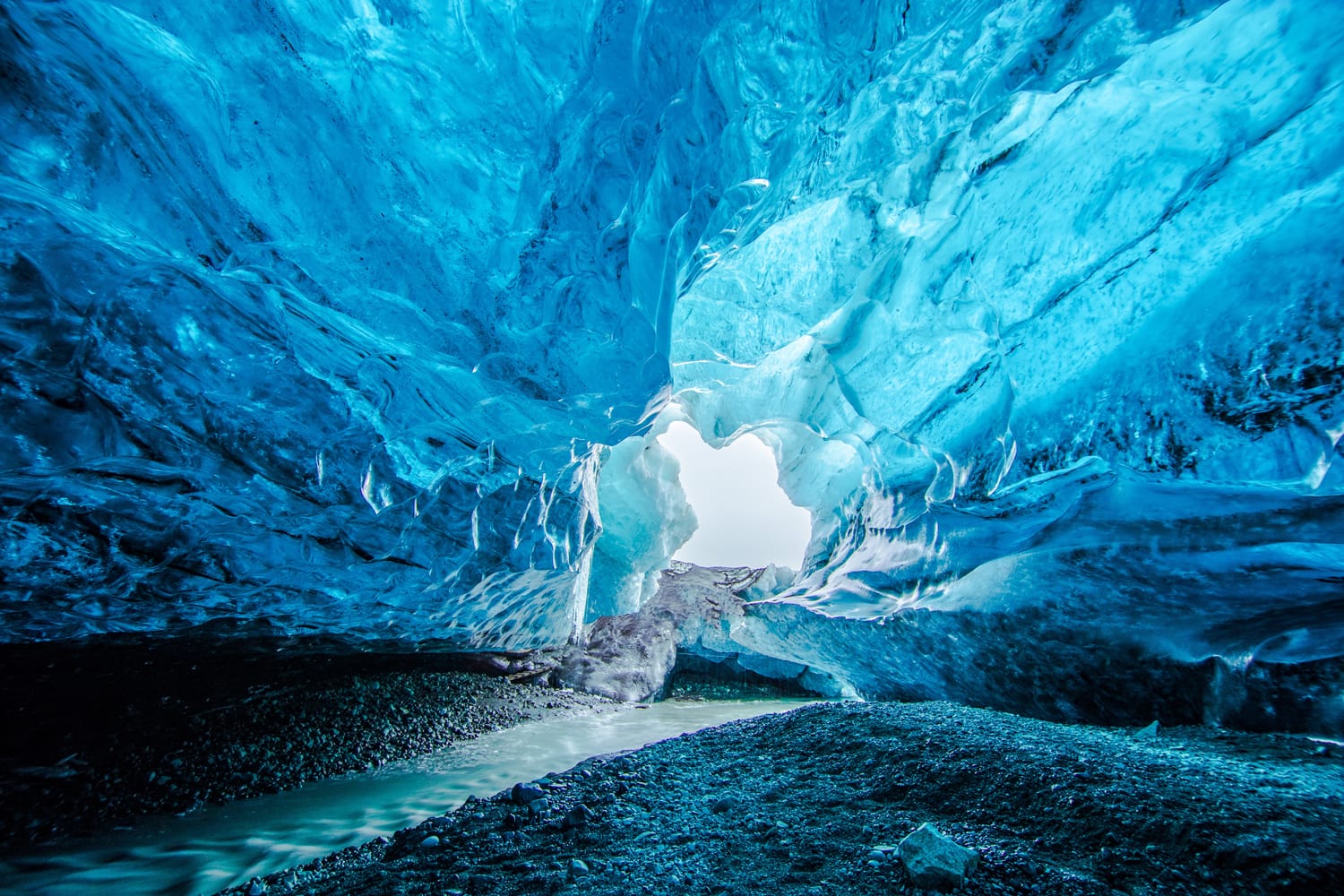
Day 4: Hofn to Mývatn
Today is a long day of driving as you wind your way northeast, then northwest from Hofn to Mývatn Lake.
Get an early start, and make your first stop in Egilsstadir, a town at the heart of the Eastfjords. The Eastfjords are pure Icelandic beauty, while in Egilsstadir you can learn more about the local history at the museum.
From here, carry on driving Route 1. You’ll be passing epic lava fields and glacial scenery before finally arriving in Mývatn. If you’re making good time, then detour further north on Route 864 to reach Detifoss, the most powerful waterfall in Iceland, before you get to Mývatn. You’ll need at least an hour and a half to get there and back from the highway (with viewing time included).
At Mývatn, check into your accommodation, then head straight to the local thermal baths, Mývatn Nature Baths. They’re like the Blue Lagoon, but with far fewer tourists!
Best Places to Stay in Mývatn:
Fosshótel Mývatn | Hótel Laxá | Vogafjós Farm Resort
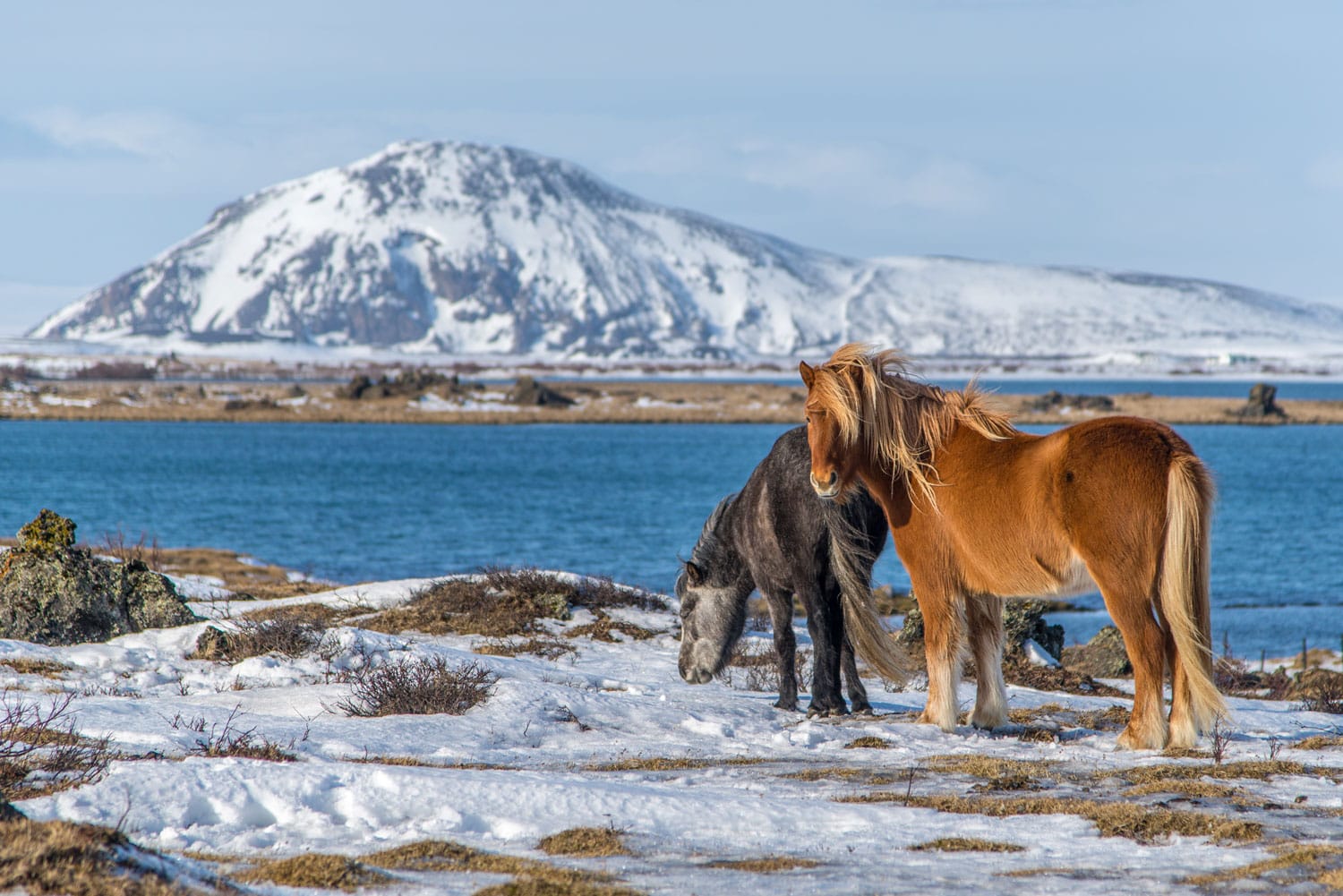
Day 5: Myvatn to Husavik/Akureyri
Myvatn is a large lake surrounded by volcanoes. It’s an area of extreme biodiversity and extreme geothermal activity. If you’re pushed for time, then head to the east side of the lake, where you can visit the strange volcanic rock formations of the Dimmuborgir Lava Field.
If you have more time, then we recommend taking a second night around the lake to relax. Spend the day hiking, bird watching, or enjoying the thermal baths.
For those of you who are pushed for time, after a stop at the lava fields it’s time to get back on the road. Instead of getting straight back onto Route 1, though, you’ll be taking Route 87 directly north to Husavik.
Husavik is the whale-watching capital of Iceland. From here, you can join a half-day whale watching trip out into the bay, where you can encounter everything from Orcas to Humpbacks. Once you’re back on dry land, visit the Husavik Whale Museum to learn more about the conservation (and past hunting) of whales, before making the one-hour drive south to Godafoss Waterfall, which is back on Route 1.
From Godafoss, it’s a short drive to Akureyri, the Arctic capital of Iceland, where you can spend the night.
Best Places to Stay in Akureyri:
Hotel Kjarnalundur | Saeluhus Apartments | Centrum Guesthouse
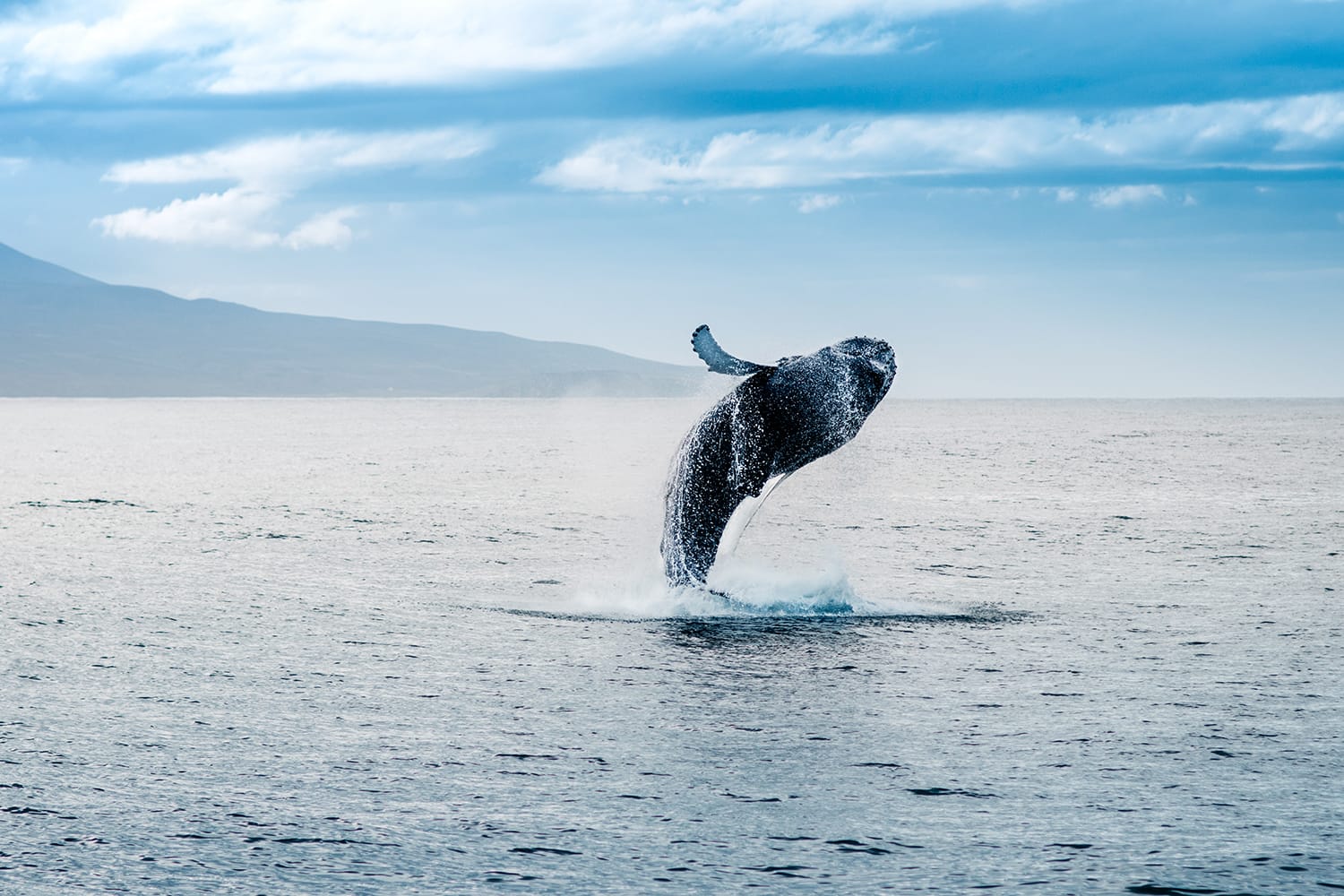
Day 6: Akureyri to Borgarnes
Akureyri has a number of small museums to visit, but for the most part, this next day is about driving. It’s a long one, but there’s a lot of epic scenery to marvel at as you make the four-hour drive southwest to Borgarnes.
This is western Iceland, and in Borgarnes you can visit the Settlement Centre. Here you can learn about the original settlement of Iceland by Norse seafarers many centuries ago.
Borgarnes is a great base from which to explore the Snaefellsnes Peninsula, which is west of Route 1. If you have an extra half-day, then make it count here!
If not, then it’s only one hour from Borgarnes to the finish line in Reykjavik.
Best Places to Stay in Borgarnes:
Icelandair Hotel Hamar | Hotel Hafnarfjall | B59 Hotel
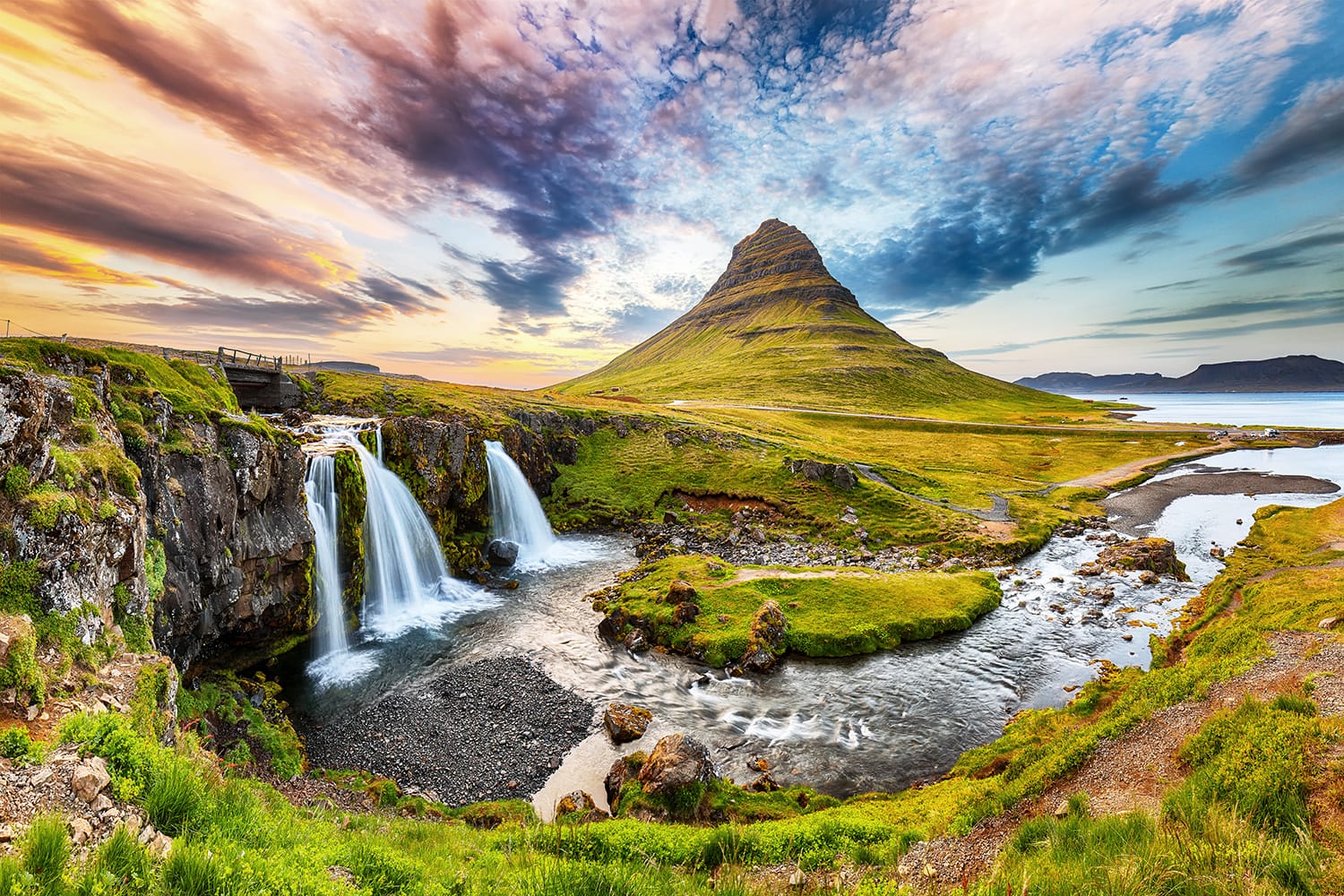
Day 7: Back to Reykjavik
If you’re not exploring the Snaefellsnes Peninsula, then you’re best spending the previous night in Reykjavik, where there’s more accommodation available.
If you choose to overnight in Borgarnes, then it’s a leisurely one-hour drive back to the capital.
Take some time to explore the sights of Reykjavik, or just take a day off and relax after an epic journey around Iceland’s Ring Road.
Road tripping Iceland’s Ring Road is the best way to see the country. You’ll experience everything that the Land of Ice and Fire is renowned for, including volcanoes, waterfalls, glaciers, thermal baths, whales, and so much more!
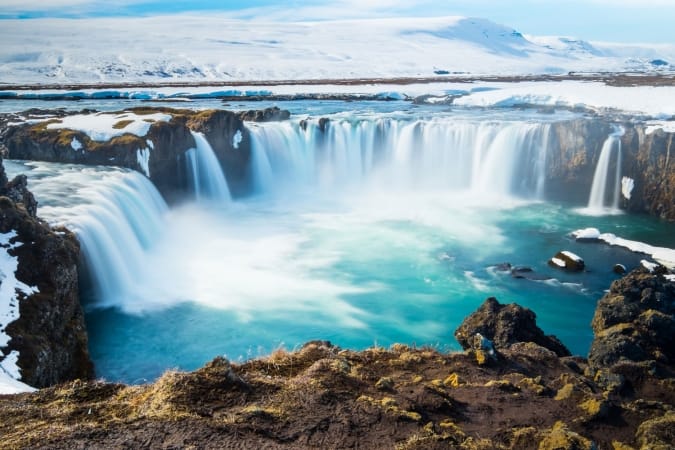
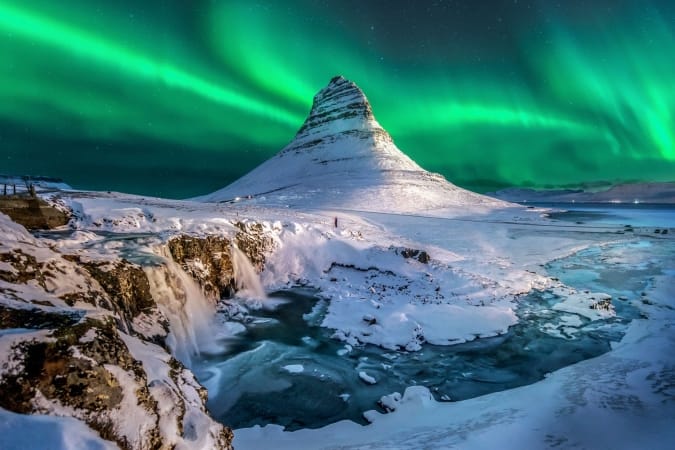

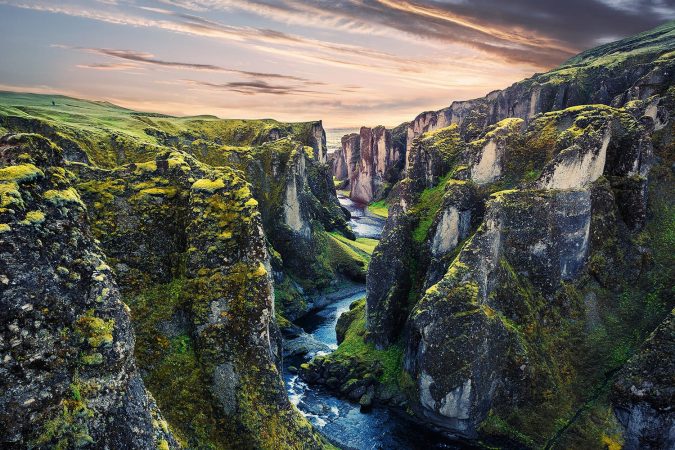
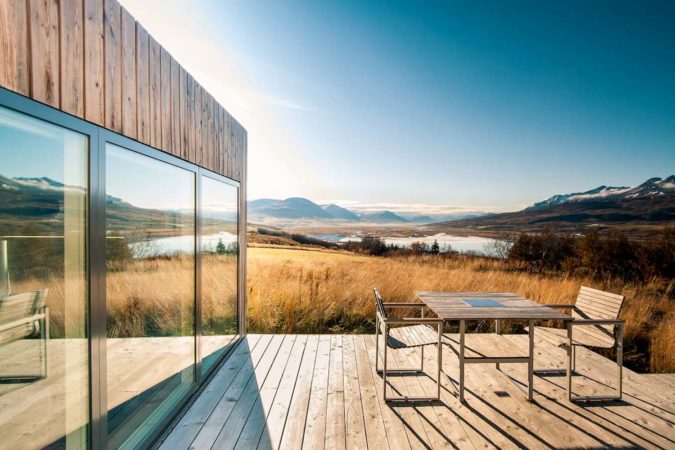
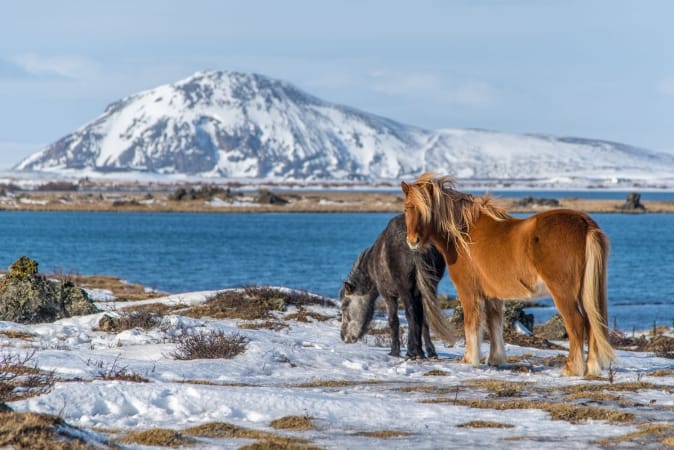
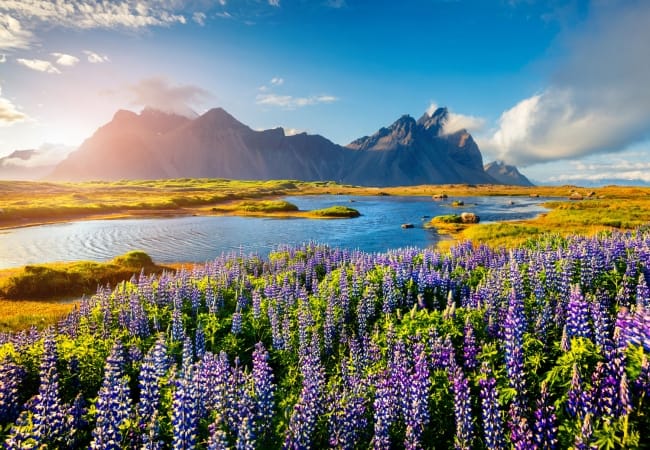
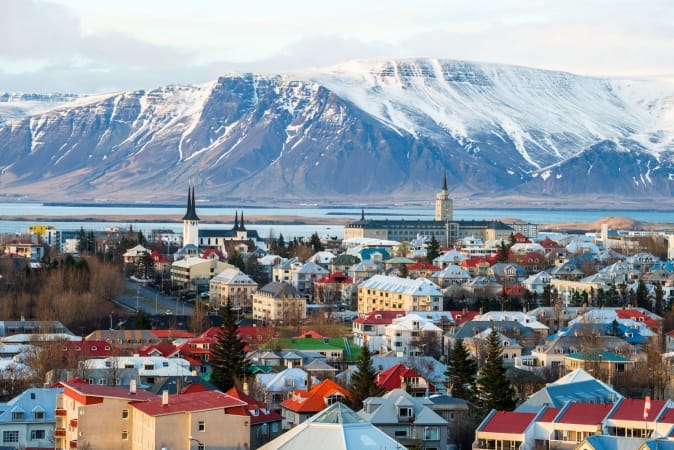
Comments